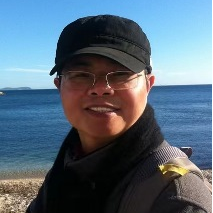Research on Submarine Hydrothermal Activity and Its Material Circulation, Magmatic Setting, and Seawater, Sedimentary, Biologic Effects
A special issue of Journal of Marine Science and Engineering (ISSN 2077-1312). This special issue belongs to the section "Geological Oceanography".
Deadline for manuscript submissions: closed (31 January 2023) | Viewed by 47019
Special Issue Editors
Interests: seafloor hydrothermal activity; seafloor hydrothermal mineralization and ore forming mechanism; marine geology; submarine hydrothermal geology
Interests: magmatic process; magmatic contributions to hydrothermal system; subduction zone process
Interests: magmatic volatile; magmatic sulfide; magma duration; magma evolution
Special Issue Information
Dear Colleagues,
Submarine hydrothermal activities distribute in the mid-ocean ridge, back-arc basin, island-arc, and hot spot region, which forms hydrothermal sulfide deposit, metalliferous sediment, and hydrothermal system (including seawater, rock, magma, sediment, hydrothermal fluid, sulfide, sulfate, hydrothermal plume, and organisms, etc.), contributing heat and mass to seawater environments. Seafloor hydrothermal activity has been a research hotspot in multiple disciplines for the past few decades. Recent improvements in technology have greatly promoted the development of research on the topic. Hydrothermal sulfide deposits with vent fluids, hydrothermal plumes, metalliferous sediments, biological species, and volcanic rocks provide new windows for understanding subseafloor fluid and magmatic processes, as well as the impact of seafloor hydrothermal activities on seawater, sediment, and ecological environments. However, there are still questions surrounding about the heat and mass flux of global hydrothermal activity, the effect of hydrothermal activity on the seawater, sediment and ecologic environment, the hydrothermal ore-forming condition and process, and the controls of tectonic and magmatism on hydrothermal activity.
The aim of this Special Issue is to advance the understanding of the latest research progress of seafloor hydrothermal activity and its material circulation, magmatic setting, and seawater, sedimentary, and biologic effects. We welcome original research papers relevant to seafloor hydrothermal activity, which will contribute to the understanding of the submarine hydrothermal geologic processes, hydrothermal mineralization, rock–fluid interaction, seawater-fluid mixing, the effect of hydrothermal fluid on seawater, sediment, and ecologic environment, the heat and mass flux of hydrothermal activity, and the control mechanism of tectonics and magmatism on hydrothermal activity. Potential topics include, but are not limited to:
- Submarine hydrothermal geology;
- Hydrothermal ore-forming condition and process;
- Tectonic and magmatic controls on hydrothermal activity;
- Effect of hydrothermal activity on seawater, sediment, rock, ecologic environment;
- Heat and mass flux of hydrothermal system;
- Technology for using to research on seafloor hydrothermal activity.
Prof. Dr. Zhigang Zeng
Dr. Yuxiang Zhang
Dr. Zuxing Chen
Guest Editors
Manuscript Submission Information
Manuscripts should be submitted online at www.mdpi.com by registering and logging in to this website. Once you are registered, click here to go to the submission form. Manuscripts can be submitted until the deadline. All submissions that pass pre-check are peer-reviewed. Accepted papers will be published continuously in the journal (as soon as accepted) and will be listed together on the special issue website. Research articles, review articles as well as short communications are invited. For planned papers, a title and short abstract (about 250 words) can be sent to the Editorial Office for assessment.
Submitted manuscripts should not have been published previously, nor be under consideration for publication elsewhere (except conference proceedings papers). All manuscripts are thoroughly refereed through a single-blind peer-review process. A guide for authors and other relevant information for submission of manuscripts is available on the Instructions for Authors page. Journal of Marine Science and Engineering is an international peer-reviewed open access monthly journal published by MDPI.
Please visit the Instructions for Authors page before submitting a manuscript. The Article Processing Charge (APC) for publication in this open access journal is 2600 CHF (Swiss Francs). Submitted papers should be well formatted and use good English. Authors may use MDPI's English editing service prior to publication or during author revisions.
Keywords
- Magmatism
- Tectonics
- Vent fluid
- Hydrothermal sulfide and sulfate
- Hydrothermal mineralization
- Metalliferous sediment
- Hydrothermal plume
- Vent organism
- Technology
Benefits of Publishing in a Special Issue
- Ease of navigation: Grouping papers by topic helps scholars navigate broad scope journals more efficiently.
- Greater discoverability: Special Issues support the reach and impact of scientific research. Articles in Special Issues are more discoverable and cited more frequently.
- Expansion of research network: Special Issues facilitate connections among authors, fostering scientific collaborations.
- External promotion: Articles in Special Issues are often promoted through the journal's social media, increasing their visibility.
- Reprint: MDPI Books provides the opportunity to republish successful Special Issues in book format, both online and in print.
Further information on MDPI's Special Issue policies can be found here.







